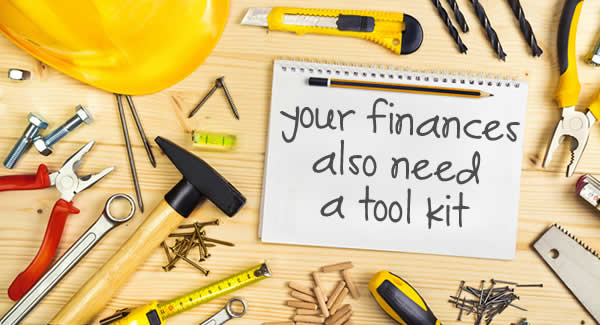 A hammer and nails aren’t useful if you have a plumbing problem. You also need a set of ideas to improve your finances, so you can pick the right tool for the job:
A hammer and nails aren’t useful if you have a plumbing problem. You also need a set of ideas to improve your finances, so you can pick the right tool for the job:
- Increase your income Check if you are entitled to any more benefits. Think about ways to earn more. Some of them are big changes – new job? rent out a room? Some of them are small – get paid to babysit? become a mystery shopper?
- Decrease your expenditure Look at everything, from groceries and utility bills to prescriptions and insurance. It’s a rare household that can’t find some savings. Be realistic – if you have been living a champagne lifestyle on a small can of beer income, you are going to have to make some serious choices about what to give up completely and what to cut back on a lot.
- Reduce the interest you pay Could you get a 0% balance transfer card or consolidate your debts? These options can have downsides and won’t work if your situation is too bad, but it’s worth checking them out – the less interest you pay, the more of your monthly payment goes to paying off the debt.
- Sell stuff Just returning a few unwanted presents or having a car boot sale could help kick-start your plans to reduce your debts or get you a small emergency fund that will make tackling your debts feel much more comfortable. If your finances are very difficult you should also look at selling bigger stuff, including the house.
- Aim for simple and realistic budgeting Many people don’t have a dramatic ’cause’ for their debts (divorce, business failure, sickness etc), they have just spent more than they have earned for a while and their debts have slowly increased. Take control of this situation by improving your budgeting! If there are two of you, tackle this together.
If you can meet your minimum payments each month but are struggling and the debt is mounting, look at some of these ways to turn your finances around and read about snowballing that debt – snowballing is the fastest way to clear debts and end up with a great credit score.
Find the combination of ideas that will work best for you now. Many of the suggestions don’t have to be permanent – challenge yourself to take lunches to work for the next two months and see how much you save.
If you can’t afford the minimum debt repayments, then you are probably going to need one of the Debt Options that involves contacting your creditors. But improving your basic finances is still important as it may make your chosen debt solution easier to live with or faster to work.
Gambling and debt is a toxic combination. It’s so tempting to think when things are bad that the only way out is to get a big win and pay off the biggest debt problems… but that usually leads to even bigger problems. See Practical steps to stop gambling and repair your finances for what you can do.